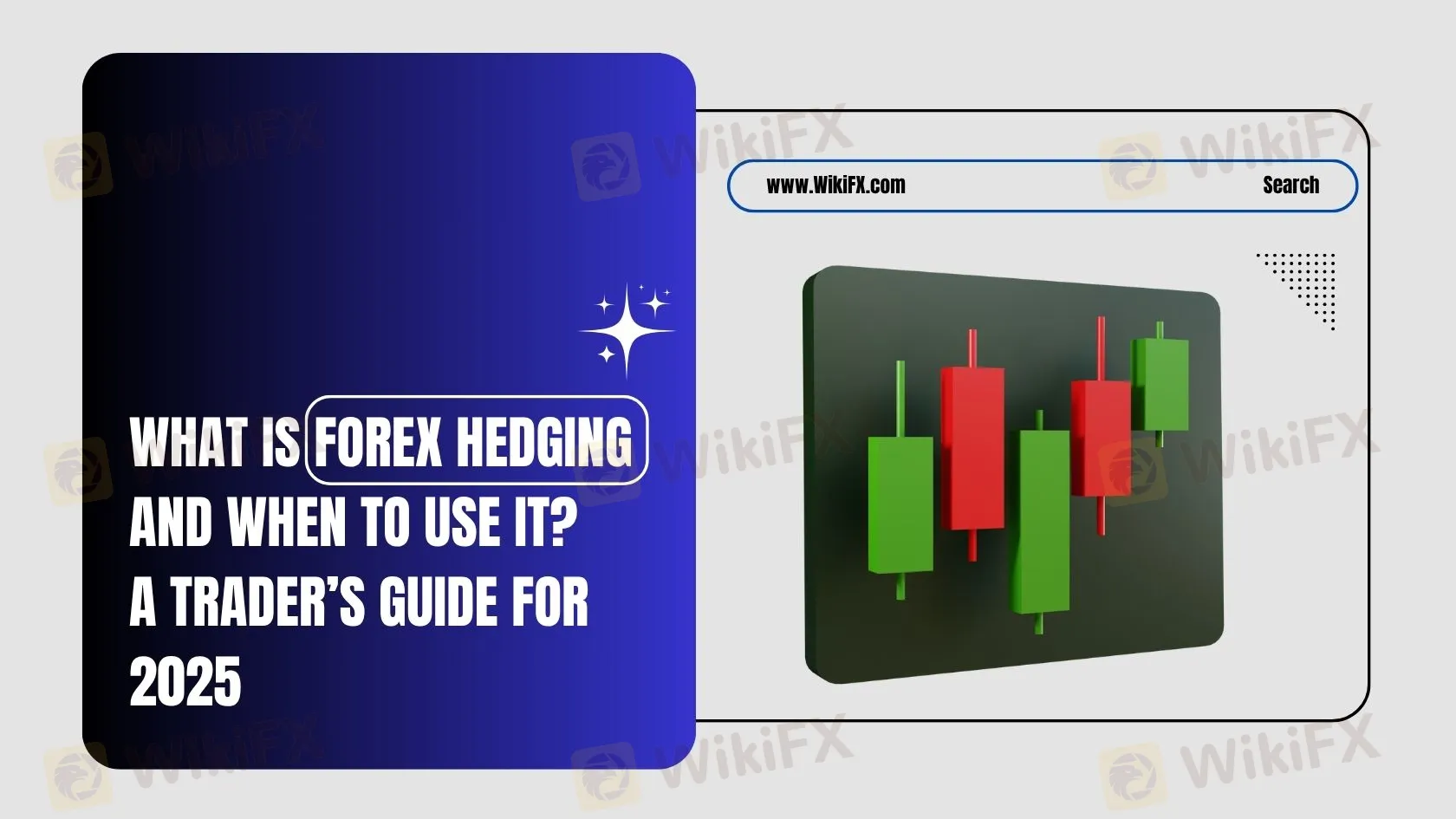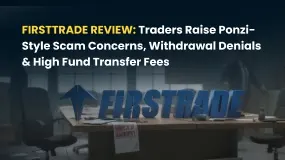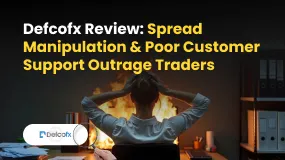简体中文
繁體中文
English
Pусский
日本語
ภาษาไทย
Tiếng Việt
Bahasa Indonesia
Español
हिन्दी
Filippiiniläinen
Français
Deutsch
Português
Türkçe
한국어
العربية
Forex Hedging Strategies Explained: Smart Risk Management for 2025
Abstract:Learn how to hedge in forex trading with real examples, timing strategies, and risk tips. A 2025 guide to smart hedging for retail and institutional traders.

Understanding Forex Hedging: A Strategic Necessity
In the highly volatile forex market, traders face constant risks due to unpredictable price fluctuations. One of the most effective methods to manage such risks is hedging. In simple terms, forex hedging is a strategy where traders open multiple positions to offset potential losses. While it‘s not about eliminating risk entirely, it’s a calculated approach to control downside exposure.
Hedging is just one of many strategies available in forex. For a comprehensive overview of other strategies like scalping, swing trading, or breakout trading, you can explore this guide on best forex trading strategies.
Who Uses Hedging, and Why Does It Matter?
Forex hedging isnt reserved for institutional traders. While banks and corporations use it to protect against currency fluctuations, individual traders can also benefit from hedging. Retail forex traders typically use hedging when exposed to high-risk positions or during volatile events such as central bank announcements.
Before using a hedging strategy, traders should ask themselves a few questions:
- Am I trading with large capital that I cant afford to lose?
- Is market volatility unusually high?
- Do I anticipate major events that could affect my open positions?
If your answer is “yes” to any of these, hedging might be suitable for you.
When Should You Hedge in Forex Trading?
Timing is critical. Hedging is not meant for every situation but is most effective when the following conditions are met:
- You have an open position during high-impact news events.
- You expect short-term fluctuations but believe in a long-term trend.
- You want to lock in profits on one trade while keeping another position active.
Use economic calendars and volatility indicators to help determine optimal timing.
Practical Forex Hedging Strategies With Real Examples
1. Direct Hedging
A trader buys and sells the same currency pair simultaneously. For example, going long EUR/USD while also opening a short EUR/USD.
Case Study:
Emma, a London-based trader, opened a long position on EUR/USD at 1.1000. Just before the ECB interest rate announcement, she shorted the same pair to cover potential volatility. After the news, she closed the short trade at a profit and maintained her long position, which she closed later when the market rebounded.
Pros: Protects during uncertainty.
Cons: Can reduce net profit due to opposite trades.
2. Multiple Currency Hedging
This involves trading correlated pairs. For example, going long EUR/USD and short USD/CHF, since both have USD as a common leg and often move inversely.
Case Study:
Luis from Madrid opened a long EUR/USD and a short USD/CHF. When USD strengthened, the loss on EUR/USD was compensated by the profit on USD/CHF.
Pros: Effective if correlation is strong.
Cons: Correlation may break unexpectedly.
3. Options-Based Hedging
Buying a forex option allows you to set a price (strike price) to buy or sell a currency pair in the future, which protects you from adverse movements.
Case Study:
Hannah, a UK corporate treasurer, bought an option to sell GBP/USD at 1.2700 while having open exposure due to international receivables. When GBP fell to 1.2400, she exercised the option, saving significant value.
Pros: Flexible and less restrictive.
Cons: Premiums can be expensive.
| Strategy Type | Best For | Risk Level | Cost | Notes |
| Direct Hedging | News trading, volatility | Medium | Moderate | Immediate protection |
| Multiple Currency Pairs | Trend-following correlations | Medium | Low | Requires strong correlation analysis |
| Options Hedging | Long-term positions | Low | High (premium) | Good for corporate protection |
How to Build Hedging Skills as a Retail Trader
Learning to hedge effectively requires understanding the relationship between currency pairs, interest rate differentials, and global economic events. Resources like the WikiFX app provide access to broker tools, demo accounts, and risk analysis instruments. Backtesting your strategy on historical data is essential.
Start simple: try demo accounts to simulate direct hedging. Gradually explore correlation-based strategies and then move on to options if supported by your broker.
Be sure to verify whether your broker allows hedging. Not all platforms support it due to local regulations.
Hidden Risks You Should Be Aware Of
While hedging can reduce losses, it can also eat into profits. Spreads, swap fees, and execution delays all impact net performance. Also, regulatory constraints may prohibit or limit hedging activities, especially under ESMA in Europe.
Check your brokers terms or verify their legitimacy on WikiFX Broker Search to ensure compliance.
Conclusion: Is Forex Hedging Right for You?
Forex hedging is not a beginner‘s trick, but with proper planning, it can be an effective layer of protection. Whether you’re trading during volatile market conditions or managing long-term exposures, mastering hedging can improve your risk-adjusted returns. The key is to start small, understand each methods strengths and weaknesses, and choose the one that aligns with your trading objectives.
FAQ
Q1: Is hedging legal in all countries?
No. Some regions like the U.S. have regulations that limit or disallow certain types of hedging for retail clients.
Q2: Does MT4/MT5 allow hedging?
Yes, most brokers on MetaTrader 4 and 5 support hedging, though some accounts use FIFO rules.
Q3: Is hedging suitable for beginners?
It depends. Beginners should practice with demo accounts and start with basic strategies before advancing.
Q4: Can I hedge manually without complex tools?
Absolutely. Simple long/short combinations on correlated pairs can be manually executed.
Q5: How can I verify if my broker allows hedging?
Use the WikiFX Broker Search tool to check broker features and regulations.
Disclaimer:
The views in this article only represent the author's personal views, and do not constitute investment advice on this platform. This platform does not guarantee the accuracy, completeness and timeliness of the information in the article, and will not be liable for any loss caused by the use of or reliance on the information in the article.
Read more

Firsttrade Review: Traders Raise Ponzi-Style Scam Concerns, Withdrawal Denials & More Issues
Have you lost all your capital while trading via Firsttrade? Does the US-based forex broker disallow you from withdrawing funds? Do you have to pay massive fees when transferring funds? Does your trade get affected because of frequent malfunction in the trading app? These have been haunting many traders at Firsttrade. Consequently, many of them have raised complaints online. In this Firsttrade review, we have shared such complaints. Keep reading to know about them.

Defcofx Review: Spread Manipulation & Poor Customer Support Outrage Traders
Does the poor customer support service leave you stunned when trading via Defcofx? Do you receive blunt, negative responses from the support team on several trading queries? Does the Saint Lucia-based forex broker pile on the losses for you by manipulating forex spread charges? In this Defcofx review, we have shared some complaints made against the broker. This will further answer your question: Is Defcofx real or fake?

How to Add and Take Out Money from Amillex Broker: A Complete Guide
Good money management is the foundation of successful trading. Learning how to make an Amillex Broker deposit and withdrawal is your first step toward trading with confidence. We know that for any trader, moving money must be safe, fast, and simple. This guide gives you a complete, step-by-step walkthrough for all amillex broker funding activities, so you can manage your account with total clarity. The whole process, from your first deposit to taking out profits, is made to be simple. You start by logging into your secure client area, picking a payment method that works for you, choosing the amount, and confirming the transaction. This guide will cover detailed deposit instructions, a full breakdown of withdrawal steps, a comparison of available payment methods, and a detailed look at the security measures protecting every transaction.

FCA warning: These Firms are on the list
In 2025, the UK’s Financial Conduct Authority (FCA) intensified its crackdown on financial misconduct, issuing a series of fines and public warnings against both major institutions and forex brokers. This article provides an updated list of brokers, banks, and financial platforms that have been recently fined, banned, or listed on the FCA’s warning list, highlighting the importance of transparency and investor protection in the UK’s financial market.
WikiFX Broker
Latest News
How to Add and Take Out Money from Amillex Broker: A Complete Guide
FCA warning: These Firms are on the list
Ponzi Scheme Operator Sentenced to 14 Years in Western Australia
Dubai VARA Warns Against Vesta Investments
Don’t Get Scammed: A Roundup of Common Online Fraud Tactics in Forex
T4Trade broker Review 2025: Is T4Trade Regulated?
Chicago PMI Beats But Remains In 'Contraction' For Second Straught Year
Annual Sales Of New Vehicles Expected To Hit Only 15.7 Million Units: Cox
MH Markets Overview: Fees, Platforms, and Regulation
Is MultiBank Group Legit or Scam? A 2025 Regulation Review
Currency Calculator



